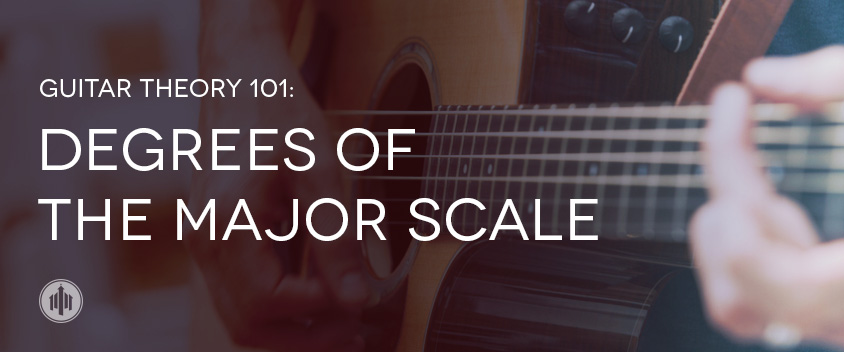
If you hang around musicians long enough, you’ll hear them talk about playing “the fifth” or “the fourth.” What are they referring to? These are degrees of the major scale.
If you recall, the major scale (we’ll use C as an example) contains 7 notes:
| C | D | E | F | G | A | B |
If you number these notes, you can now see the degrees of the C major scale.
| C | D | E | F | G | A | B |
| 1 | 2 | 3 | 4 | 5 | 6 | 7 |
So D is the 2nd of C, F is the 4th, A is the 6th, etc. In modern music most songs are made up of a root chord (the 1st) and also use the 4th and 5th chords. So a song in the key of C will also use the F and G chords at some point. If there is another chord in the song it will typically be the 6th, played as a minor. In the key of C that is an Am chord.
This comes in very handy when trying to figure out a song. If you can figure out what key a song is in, you automatically know which other chords will be used!
As you become aware of degrees, you’ll begin to hear them in songs, making it easy to pick out the chords. No matter what key a song is in, when the 5th is played, it has a very distinctive sound. Same with the 6th, the 4th, and the 2nd.
Additionally, the different degrees are typically played as a minor or a major chord:
| 1: Major | 2: Minor | 3: Minor | 4: Major | 5: Major | 6: Minor | 7: diminished |
| C | Dm | Em | F | G | Am | B- |

